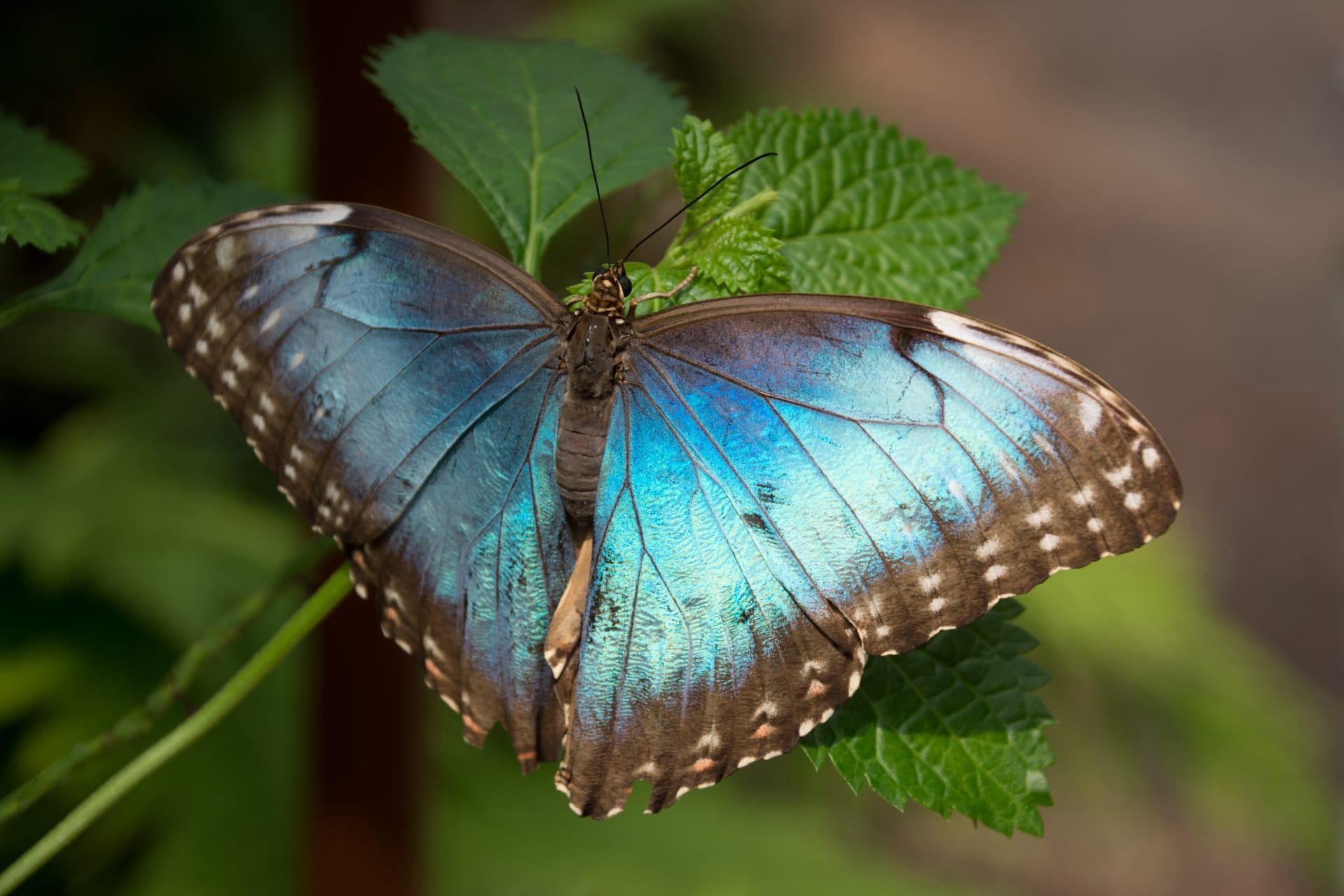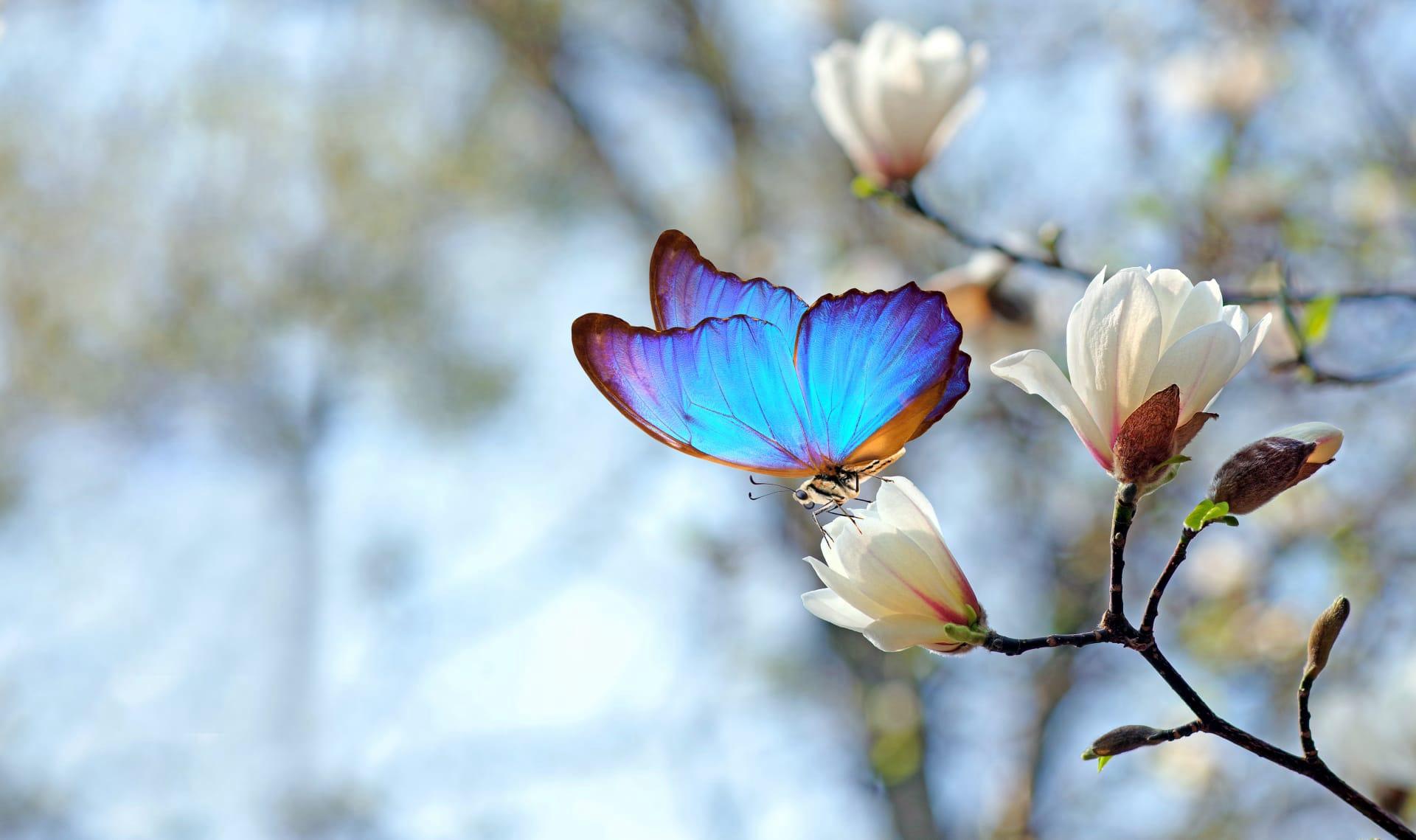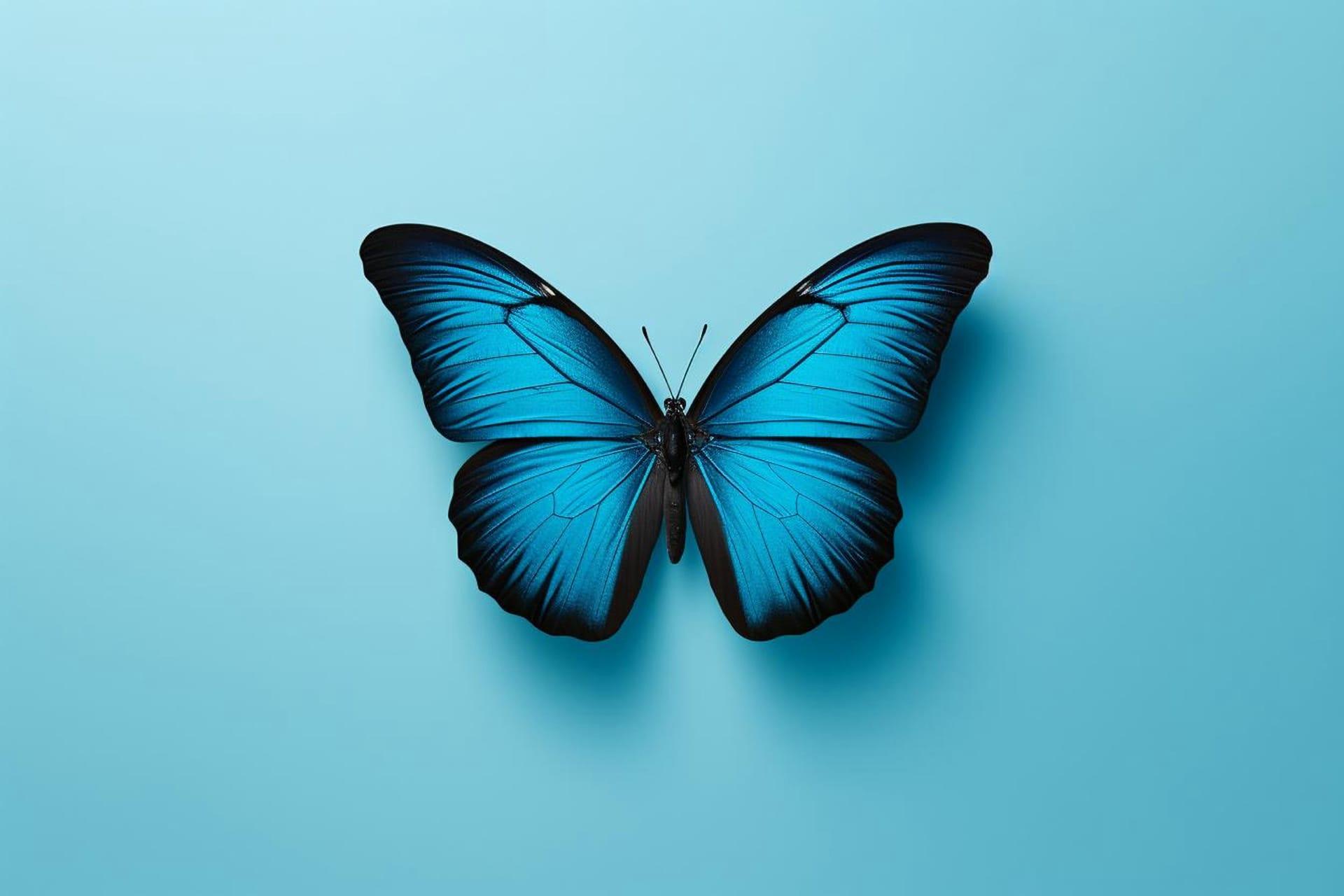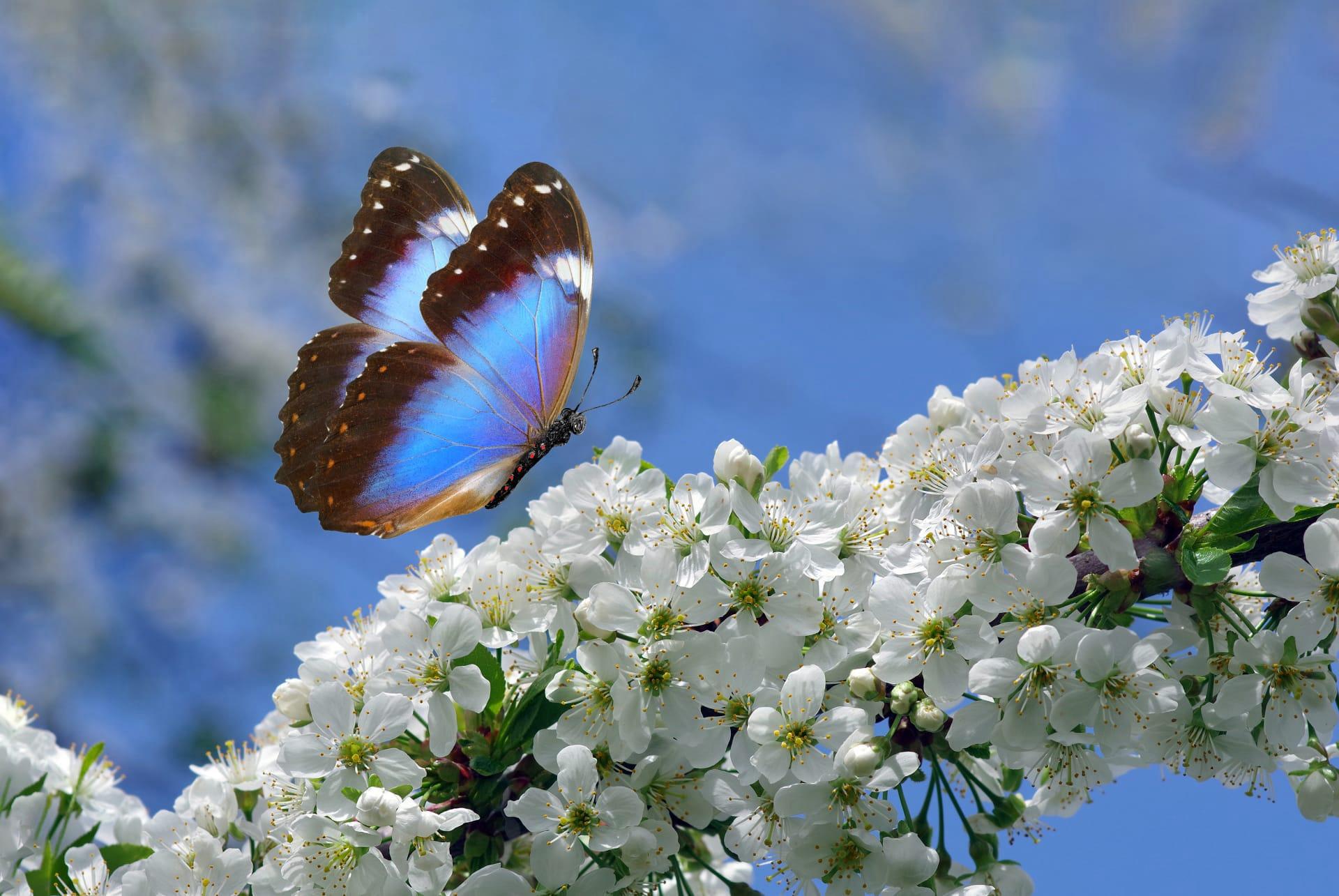Morpho Butterfly
- Home /
- Mini Encyclopedia /
- Animal /
- Morpho Butterfly
1
Morpho butterflies, scientifically known as Morpho, are a large genus of neotropical butterflies under the family Nymphalidae. They're renowned for their striking iridescent wings, which can span up to 8 inches (20 cm). There are over 29 recognized species in the Morpho genus, each exhibiting slight variations in size, color, and wing patterns. These species include the iconic Morpho peleides and the rare Morpho rhodopteron, among others. Distinguished by their vibrant blue wings, Morphos are not just a single species but a complex array of butterflies with nuanced differences in their physical characteristics.
Morpho butterflies predominantly inhabit the tropical forests of Latin America, from Mexico down through Central and South America to Argentina. These butterflies are particularly abundant in the Amazon rainforest, thriving in hot, humid conditions. They prefer lower altitudes, generally ranging from sea level to 1,400 meters (4,600 feet), but some species are found up to 2,800 meters (9,200 feet). Their habitat is crucial to their survival, providing not only the necessary climatic conditions but also the specific host plants required for their caterpillars. Deforestation and habitat loss pose significant threats to their distribution and population.

2
Question: Do Morpho butterflies have blue pigment in their wings?
Answer: Contrary to popular belief, Morpho butterflies do not possess any blue pigment in their wings. Their brilliant blue coloration is a result of structural coloration, where microscopic scales on their wings reflect light in such a way that it produces the vivid blue hue. This phenomenon, known as iridescence, changes intensity and color as the angle of view or the angle of illumination changes. The scales are composed of layers of cuticles containing microscopic ridges that interact with light through constructive interference, amplifying certain wavelengths while canceling others. This unique adaptation not only creates their stunning appearance but also plays a role in thermoregulation and predator avoidance.

3
Morpho butterflies employ several survival strategies. One key strategy is their wing coloration, which provides excellent camouflage against predators. When their wings are closed, the dull, brown underside of their wings blends seamlessly with the forest environment, making them hard to spot. Another tactic is their flight pattern. Morphos are known for their erratic and fast flying, often reaching speeds of up to 12 miles per hour (19 kilometers per hour). This flight pattern makes it difficult for predators to track and catch them.
In addition to physical adaptations, Morpho butterflies have a unique behavioral strategy for survival. They are crepuscular, meaning they are most active during dawn and dusk, a time when their main predators, like birds, are less active. Furthermore, Morpho caterpillars have a mutualistic relationship with certain ant species. These ants protect the caterpillars from predators and parasites, while the caterpillars secrete a sugary substance that the ants feed on. This symbiotic relationship enhances their chances of reaching adulthood.

4
In the ecosystem, Morpho butterflies play a vital role in the pollination of various plant species. While feeding on the nectar of flowers, they inadvertently transfer pollen from one flower to another, aiding in plant reproduction. This pollination is crucial for the health of the tropical forests they inhabit, ensuring the continuation of diverse plant life.
Morpho butterflies also serve as an important food source for a range of predators, including birds, bats, and insects. Their presence in the food chain helps maintain the balance of these ecosystems. Moreover, Morpho caterpillars consume large amounts of plant leaves, playing a role in controlling the growth and health of vegetation. This leaf consumption is vital for the ecological balance, preventing overgrowth and allowing for a variety of plant species to thrive.

5
Film: "Wings of the Butterfly" (United States, 2018) - This documentary explores the captivating world of the Morpho butterfly, showcasing their life cycle, habitat, and the unique structural coloration of their wings. It highlights the challenges they face, from environmental threats to natural predators, providing an in-depth look at these fascinating creatures.
Book: "The Blue Wonder: The Secret Life of the Morpho Butterfly" (United Kingdom, 2020) by David Attenborough. This book delves into the mysterious world of Morpho butterflies, exploring their behavioral patterns, life cycle, and the science behind their dazzling blue wings. Attenborough's vivid narration brings to life the intricate details of these butterflies, making it an engaging read.
Book: "Fluttering Giants: The Morpho Butterflies" (Canada, 2021) by Emily Stone. Stone's book offers a comprehensive guide to the Morpho butterflies, detailing their ecological significance, survival strategies, and the impact of human activities on their habitats. Rich in scientific information yet accessible, this book provides a thorough understanding of these magnificent creatures.